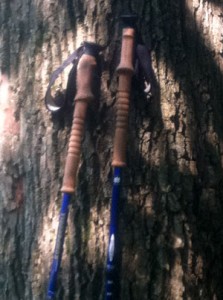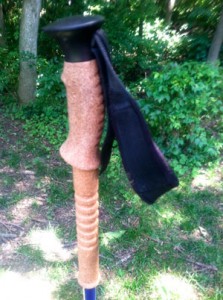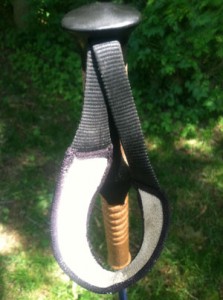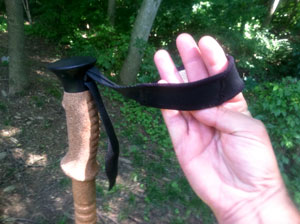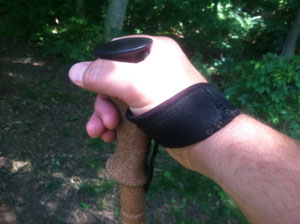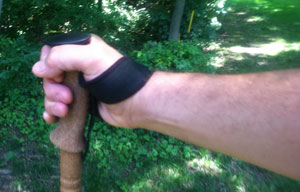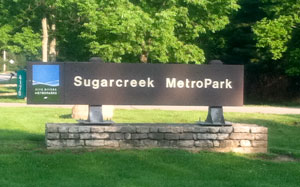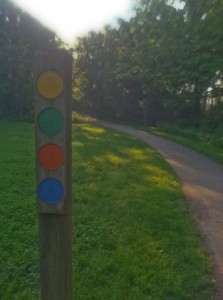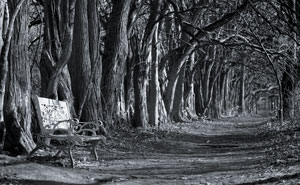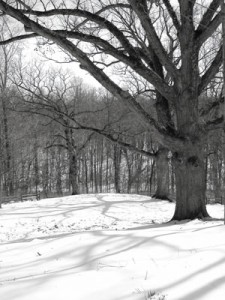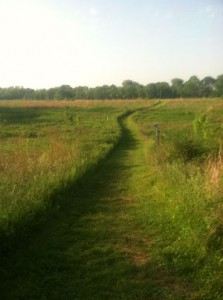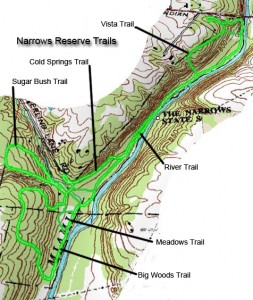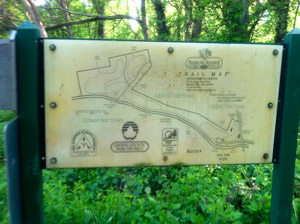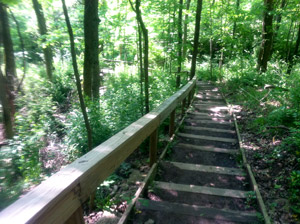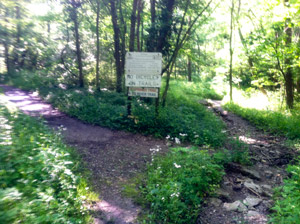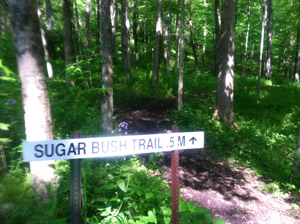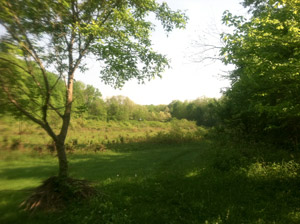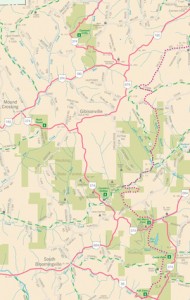
Hocking Hills Area (Click on Map for Enlarged View)
The Hocking Hills area, in southeastern Ohio, has some of the most beautiful and interesting parks you will find in Ohio. It amazes me how many people have never heard of Ash Cave, Cantwell Cliffs, Cedar Falls, Conkle’s Hollow, Old Man’s Cave, and Rock House these beautiful areas carved by water and wind over the millennium.
I took a bunch of Boy Scouts to Hocking Hills and hiked from Old Man’s Cave to Cedar Falls and back. I explained to them how the water eroded the sandstone gorge creating the beauty we were seeing. One young scout just couldn’t comprehend how this had all happened naturally over time and he said to me, “Now who built this?” He was pretty sure Disney or someone had come in and done the job. I reassured him even as good as Disney was, only nature could build something this nice.
Area Maps
The best thing about the various parks is almost everyone can enjoy them since most of them are relatively easy to reach. Ash Cave and Conkle’s Hollow are wheelchair accessible. Following is a guide to length and difficulty.
Click the name above for area maps of all the attractions. The number of stair-steps is even marked to help you decide if this trail is for you.
My favorite day hike is to go from Old Man’s Cave to Cedar Falls to Ash Cave and back. There are a few spots where there are some stairs that could be deemed difficult by some, but I found most of it moderate to easy. The Buckeye Trail people have a page on their website describing the hike. According to their website you can do it in two ways, either 6 or 10 miles. It is a great hike, sometimes at the falls and at the cave there can be a lot of people. The trail between the two is usually pretty quiet. It will be worth your while to check with a ranger to make sure the trail from Old Man’s Cave to Cedar Falls is passable. During certain times of the year a lot of water can move through the gorge washing away bridges and knocking down trees.
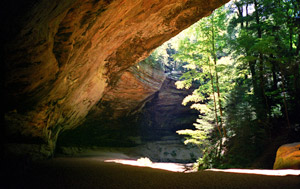
Ash Cave
Ash Cave
Old Man’s Cave is the most visited of the parks, but my favorite is Ash Cave. There is something about its majesty and size. Sitting back under the rim gives me a real peaceful feeling. Ash Cave is 700 feet long, 100 feet front to back, with the rim 90 feet above. A beautiful little waterfall cascades from the rim. The cave was named for the large pile of ashes that was found under the rim from Indian campfires built up over hundreds of years. Some believe the Indians were smelting silver or lead others claim they were making saltpeter. Ash Cave is wheelchair accessible.
Cantwell Cliffs
Cantwell Cliffs is probably the least visited of the group because its location is remote from the rest. Many people believe this is the most picturesque in Hocking County. Personally, I think they all have their own unique qualities. Its trails may be the most challenging. Try to get through “Fat Woman’s Squeeze.”
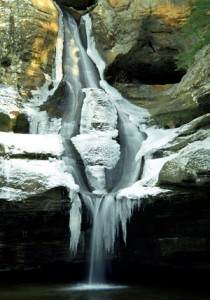
Cedar Falls in Winter
Cedar Falls
Cedar Falls is a fifty foot water fall. It is the largest waterfall, by volume, in Hocking Hills State Park. The falls usually runs year round. The falls were misnamed by the early settlers. They thought the surrounding eastern hemlocks were cedars. It is one of the most popular attractions in Hocking County.
It is a relatively short hike to Ash Cave from the falls. Additionally, you can hike to Old Man’s Cave from the falls. These trails are a part of the Ohio Buckeye Trail. This six-mile section of the Buckeye Trail at Cedar Falls Ohio, also known as the Grandma Gatewood Trail, is part of two national trails: the North Country Scenic Trail and the American Discovery Trail.
There is an interesting bridge below Cedar Falls called “Bent Bridge.” This bridge was originally straight, but during high water downed trees rammed the bridge bending the steel girders. Extensive repair and modernization was done in the gorge in 2002-2003. The bridge was repaired, but was left with the familiar curve.
At one time there was a grist mill at the top of the falls. From the bridge at the top of the falls, if you look closely at the stream remnants of the old mill can be seen. The grist stones by the Bent bridge are from the old mill.
Conkle’s Hollow
Conkle’s Hollow is known for its Blackhand sandstone cliffs that rise 200 feet above the valley floor. The cliffs are quite spectacular, but I love the Conkle’s Hollow gorge for the ferns and peaceful feeling it gives you. The gorge is only 100 feet wide in places and has a number of waterfalls. Conkle’s Hollow is named after an early German immigrant W.J. Conkle who was an early visitor to the ravine. In 1797, Conkle carved his name into the west side of the cliff and settled nearby.
There are a couple of legends about Conkle’s Hollow. The first on says there is still treasure hidden in the cliffs that Native Americans placed there, but could not retrieve because the tree they were going to use as a ladder fell down so there was no way to reach the loot. Supposedly there is an arrow carved in an eastern wall pointing to the loot. The other story also pertains to some Native Americans. It was said they stole some loot from some settlers traveling in the area. They were captured and hung for their crimes in the hollow. The story is you can still see their shadows roaming up and down the trails.
Click here for a nice brochure the Division of Natural Areas and Preserves put together on Conkle’s Hollow history and geology. Part of the trail is wheelchair accessible.
Climbing Area
For climbers, just a little farther down the road from Conkle’s Hollow on Big Pine Road is a state-owned climbing area. The climbing area features about one mile of cliffs up to 120 feet tall. There are also fallen house-sized boulders, cracks, chimneys and overhangs.
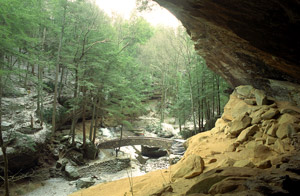
View From Old Man's Cave into Gorge
Old Man’s Cave
Old Man’s Cave is the most popular of the six major areas of Hocking Hills State Park. Old Man’s Cave was named for an early settler, Richard Rowe. Rowe had set up living quarters in one of the many recess caves in the area after the Civil War. Killed by an accidental blast of his own gun, it is said local native Indians buried him somewhere near the entrance of the Cave.
The gorge at Old Man’s Cave is about a mile long with multiple waterfalls, sandstone cliffs and rock formations with names like the Devil’s Bathtub, Sphinx Head, Eagle Rock and Whale in the Wall. Old Man’s Cave is also home to the 149-foot-tall hemlock that’s said to be the tallest tree in Ohio.
There are five main sections carved by Old Man’s Creek that runs through the gorge: Upper Falls, Upper Gorge, Middle Falls, Lower Falls and Lower Gorge. The Grandma Gatewood Trail —a six-mile stretch of Ohio’s Buckeye Trail — begins at Upper Falls and leads from Old Man’s Cave Ohio to Cedar Falls and Ash Cave, two other areas within Hocking Hills State Park. The Grandma Gatewood Trail is also part of two national trails: the North Country Scenic Trail and the American Discovery Trail as well as the Ohio Buckeye Trail.
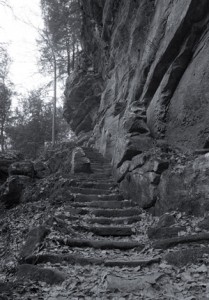
Stairs to Rock House
Rock House
Rock House is unique in the Hocking Hills’ region, as it is the only true cave in the park as well as having a very colorful past. The trail to the Rock House is a bit more challenging than most of the other trails in Hocking Hills State Park, but I believe you will find it worthwhile to make a visit.
Rock House is a tunnel-like corridor situated midway up a 150-foot cliff of Blackhand sandstone which you see all over the area. The Rock House is complete with seven Gothic-arched windows and great sandstone columns which bear the weight of the roof.
The ceiling is 25 feet high while the main corridor is 200 feet long and 20 to 30 feet wide. Water leaking through a horizontal joint running parallel to the cliff face caused the hollowing of the corridor. This main joint or crack is very visible in the ceiling of the Rock House. A small series of joints run north to south at right angles to the main joint. Enlargement of this series of joints formed the window-like openings of Rock House.
Rock House was used for shelter by past visitors. Hominy holes, small recesses in the rear wall of Rock House, served as baking ovens for Native Americans using the cave. By building a fire in the small recesses, the rock became heated on all sides allowing food could be baked. Chiseled out troughs or holding tanks found in the stone floor were used for water storage. When rainfall is abundant, springs of water permeate the porous sandstone and flow into these troughs and, when full, continue across the floor and out of the windows.
Rock House has long been a popular tourist attraction. In 1835, Colonel F.F. Rempel of Logan erected a 16-room hotel compete with ballroom, livery stable and a U.S. Post Office. The hotel stood where the picnic shelter is today. Numerous dated carvings in the rock bear evidence of this area’s long-standing popularity.
According to local folklore, there were also some not so welcome visitors to Rock House. Robbers, horse thieves, murderers and even bootleggers earned Rock House a reputation as, “Robbers Roost.”
Turpentine was a vital commodity for the Indians. It was used as medicine, both internally (even though today we know that is not a good idea) and externally, for a variety of illnesses and injuries. Inside the Rock House are two “turpentine stills,” left over from the Indian days. The stills are small recesses, or depressions, hand carved on the top surfaces of two sandstone shelves, each with a small channel leading over to the lip of the shelf. The Indians would place bits of pitch pine wood in one of the depressions. A layer of flat sandstone would be placed over the wood, and a fire would be built on top. The heat would drive the sap out of the wood, which would then flow through the channel and pour into a waiting vessel.
In the late 1700’s, the Indians were driven out of the area. The pioneers who moved in and occupied the land had an even bigger need for turpentine than the Indians. Pioneers used the Indian stills, but with a slight change in technology. The pioneers would invert their black, iron kettles over the pine bits, and build the fire on top.
The use of turpentine as medicine for man and beast continued for many years. Turpentine was sold, for medicinal purposes, in pharmacies until the mid-1960’s. Today the only turpentine you will find will be in hardware stores sold as paint thinner.
Winter Hike
The whole Hocking Hills area is really worth the trip. I would highly recommend a winter trip. You definitely have to be careful on your hikes because of all the slippery spots, but the frozen and partly frozen waterfalls are spectacular. You could also catch a break with the number of people you encounter. I would recommend getting there early regardless to cut the number of people you meet. Being there in virtual solitude is priceless.


